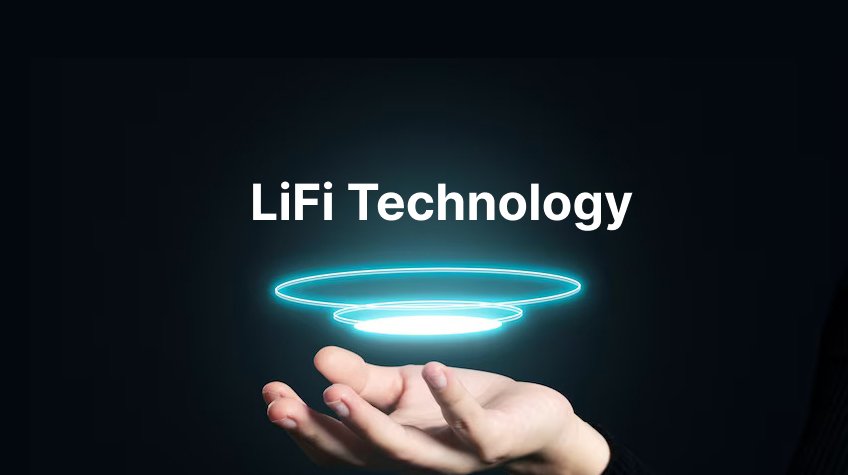Technology
Green Transportation Networks: The Energy-Efficient Benefits of Li-Fi
You know green transportation networks are turning out to be increasingly important in the present

You know green transportation networks are turning out to be increasingly important in the present era to reduce environmental impact. One technology that ensures promise in this regard is Lifi Internet which offers energy-efficient benefits for transportation systems. Here is how the Li-Fi type of Internet plays a role in green transportation networks:
Quick Understanding of Lifi
Li-Fi net is a special technology. Rather than making use of radio waves as Wi-Fi does, it shares or commutes data using light waves. This new way has a manifold of benefits, like faster data speeds, better security, and even less interference. Li-Fi net might simply change how things connect in different areas, such as transportation.
Communicating in an Energy-Efficient Way
A huge advantage of Li-Fi net for transportation is that it saves energy. Unlike regular Wi-Fi which requires a lot of energy for its radio signals, Li-Fi makes use of light-emitting diodes (LEDs) to send data. LEDs are much better at saving energy than regular Wi-Fi routers, which means reduced power is used and fewer greenhouse gases are emitted in overall transportation systems.
Enhanced Traffic Management
In transportation, it is critical to manage traffic well to avoid jams and save fuel. Li-Fi type of Internet can easily help by sending data quickly between vehicles and roads. This permits you to coordinate better, control traffic smarter, and find the best routes, and that means using less energy and emitting fewer greenhouse gases.
Better Connectivity on Vehicles
You know Li-Fi Net can definitely provide high-speed and reliable connectivity in the realm of vehicles, such as buses, trains, and even aeroplanes. By installing Li-Fi-enabled systems aboard, passengers can easily relish seamless internet access for entertainment, communication, and even proper productivity during their journeys. This enhances the overall passenger experience at the same time minimizing energy consumption in comparison to traditional Wi-Fi systems.
Experience Sustainable Infrastructure
Li-Fi type of Internet can help make transportation more eco-friendly. By adding Li-Fi communication systems to diverse places like airports and train stations, you can experience good connections without hurting the environment. Also, you can even power Li-Fi with renewable energy, hence making it even better for the entire planet.
Managing Green Fleet
For transportation fleets such as buses and delivery trucks, Li-Fi kind of Internet can help save energy. When vehicles have Li-Fi communication systems, managers can easily supervise and monitor how well they work, pick the best routes, and even cut down on waiting times. Such a thing ensures saving of fuel and makes less pollution, endorsing green ways of managing fleets and at the same time making everything run effectively and better.
Applications of Li-Fi in Green Transportation Networks
- Smart Public Transportation
Li-Fi systems in smart public transport enhance passenger connections and even monitor vehicles in real time. Hence, enhancing efficiency and sustainability at the same time cutting carbon emissions.
- Electric Vehicles
Li-Fi Net can join electric vehicle charging stations to wirelessly track and even manage charging, endorsing electric vehicle usage with efficient and handy charging options. Hence, dropping the need for fossil fuels.
- Sustainable Aviation
In aviation, Li-Fi net enhances onboard connectivity, boosting passenger experience and operational efficiency. Using Li-Fi rather than traditional Wi-Fi drops energy use and environmental influence for airlines.
Conclusion:
So, Li-fi technology has great power for promoting energy-efficient transportation networks. With its high-speed connectivity and less energy use, Li-Fi aids in the development of Ent greener transportation systems by enhancing vehicle connectivity, managing traffic, and infrastructure sustainability.
Table of Contents
-

 Business5 months ago
Business5 months agoSepatuindonesia.com | Best Online Store in Indonesia
-

 Technology3 weeks ago
Technology3 weeks agoTop High Paying Affiliate Programs
-

 Tech5 months ago
Tech5 months agoAutomating Your Window Treatments: The Advantages of Auto Blinds
-

 Tech5 months ago
Tech5 months agoUnleash Your Potential: How Mecha Headsets Improve Productivity and Focus
-

 Instagram2 years ago
Instagram2 years agoFree Instagram Follower Without Login
-

 Reviews11 months ago
Reviews11 months agoAndroid Laptop vs. Chromebook: Which one is better?
-

 Instagram2 years ago
Instagram2 years agoIGTOK – Get Instagram Followers, Likes & Comments
-

 Business8 months ago
Business8 months agoFollow These 5 Tips To Avail Personal Loans At Lower Interest Rates




















